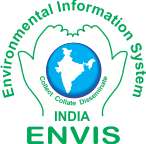|
 |
Sahyadri ENews: LXIX
HYDRO-ECOLOGICAL FOOTPRINT OF SHARAVATHI RIVER BASIN
|
 |
Issues:
1
2
3
4
5
6
7
8
9
10
11
12
13
14
15
16
17
18
19
20
21
22
23
24
25
26
27
28
29
30
31
32
33
34
35
36
37
38
39
40
41
42
43
44
45
46
47
48
49
50
51
52
53
54
55
56
57
58
59
60
61
62
63
64
65
66
67
68
HYDRO-ECOLOGICAL FOOTPRINT OF SHARAVATHI RIVER BASIN
(PDF)
Vinay. S1,2, Bharath, S1, Chndran, M. D. S1,Bharath, H. A1,3, Shashishankar, A2,4, Ramachandra. T. V1
1Energy and Wetlands Research Group, Centre for Ecological Sciences, Indian Institute of Science, Bangalore
2Visvesvaraya Technological University, Belgaum
3RCGSIDM, IIT Kharagpur, Kharagpur
4AMC Engineering College, Bannerghatta Road, Bangalore
2. Introduction
Environmental flow refers to the hydrologic regime that sustains biota with adequate quantity and quality of water [1].Flow regimes or temporal flow pattern of river/stream/estuary/groundwater, etc. is described by several components namely
i) duration,
ii) timing,
iii) magnitude,
iv) frequency,
v) the rate of change of flow [2]–[4]..
low regimes play a decisive role in determining
i) structure, components and composition of biota,
ii) functions of aquatic, wetland, and riparian ecosystems [5].
It is necessary to maintain the appropriate flow conditions such as floods, high flow and low flow conditions to sustain the health of the aquatic ecosystems - lakes, streams, rivers, sub-surfaces, estuaries, etc.with the associated ecosystems, and habitats, sustaining people’s livelihood [6], [7], to ensure sustained functionalities and use of resources [8]. A well maintained natural ecosystem has better water retention capability through subsurface flows, soil water storage, evapotranspiration etc. giving an edge over degraded catchments [9], [10]. Flow regimes are key drivers for riverine and dependent ecosystems that are governed by climate(meteorology), vegetation (landscape), geology, soil, topography, catchment characteristics and also anthropogenic interventions [3], [11].
Eco-hydrological footprint assessment entails estimation of carrying capacity of a river basin considering water availability and demand of water for sustenance of biotic components. Water resource carrying capacity (WRCC) of a catchment provides a theoretical basis and means of operation for sustainable development while accounting for the system’s supportive and assimilative capacity without affecting the ecological and biological functions, integrity and productivity[12]–[14]. Uneven spatial and temporal distribution of water resourceswith varied climatic regimes have led to variability in water availability from local to global scales. United Nations World Water Assessment Programme 2015 [15]has predicted that by 2050, the global demand of water would increase by 55%, while fresh water resources either surface or ground water resources depleting due to irrational mismanagement with growing demands of burgeoning population, agriculture, and other socio-economic activities. This would induce imbalances among water users and uses increasing risks of water allocations devoid of ecological requirements and disrupting the local/regional ecosystems.Developing countries in the tropics are facing imbalance in resource supply and demands due to rapid deforestation [16], [17] with the unplanned developmental activities. Burgeoning population with an enhanced demand of natural resources, have led to the over exploitation of natural resources such as water, forest, land etc.Anthropogenic activities coupled with skewed policies in the form of logging, afforestation by plantation trees, dam constructions, and conversion of lands for other uses have resulted in the disappearance of pristine forests and wetlands [18]. This structural changes in the forest ecosystem has affected the functional aspects namely hydrological cycle, bio-geo chemical cycles and nutrient cycling there by impacting the assimilative and supportive capacity [19], [20]. Increase in the magnitude and frequency overland flows [21], reduction in the aerodynamics roughness, leaf area, root zone depth consequently reducing evapotranspiration, soil infiltration capabilities [22]–[25] occurs with clearing of forest lands for agricultural and other land use practices. In the mature climax forests, the annual surface transpiration reduces with increase in understory transpiration, due to increasing storage of water in the subsurface, stream become perennial with sustained yield [26]. This makes it very important to safeguard and maintain the exiting forests patches to preserve hydrological regime which caters biotic (ecological and societal) demands
Eco-hydrological footprint highlights the interaction among water resources,and humanswith the environment. In order to achieve sustainability in the water basins the water resource should be managed to cater both natural and human environment without hampering the natural resources. The environmental demand involves maintaining ecological flows and forest water requirements (such as transpiration, etc.), human (including domestic, industrial, agriculture) demands. Conservation of the natural ecosystems would ensure sustenance of natural resources and contributes significantly to the region’s economy. A well maintained natural ecosystems has better water retention capability through subsurface flows, soil water storage, evapotranspiration etc. giving an edge over degraded catchments [9], [10].
This communication focusses on eco-hydrological footprint of a Sharavathi river basin in the Western Ghats through assessment of hydrologic regime along with the demand of the biotic components. Insights of eco-hydrological footprint assessment will aid in the land use management with the improved water use efficiency, appropriate cropping pattern, restrictions on irrational land use changes towards the sustainable development of the river catchment.
NEXT
|

